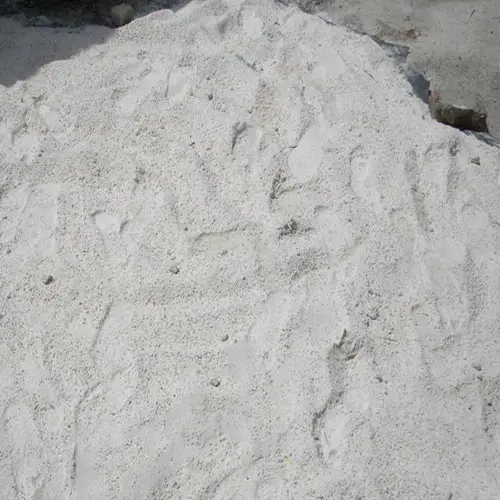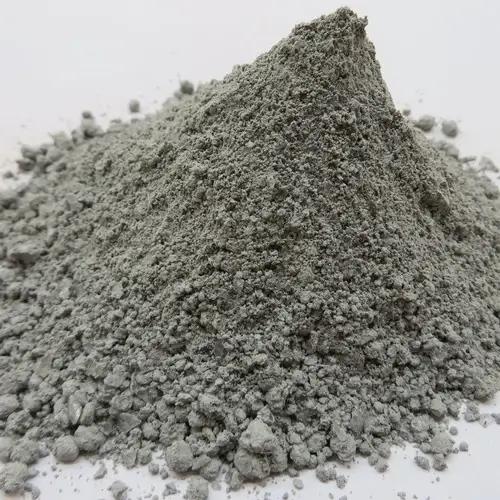Refractory castables, as an indispensable refractory material, have strength characteristics that are directly related to their quality and performance. In many industrial fields, such as metallurgy, cement production, glass manufacturing and chemical industry, castables play a pivotal role. Therefore, the research and development of high-performance castables is particularly important.
It is especially worth mentioning that aluminum-magnesium castables are popular for their excellent high-temperature stability and erosion resistance. It is often found in high-temperature equipment such as steel ladle, RH refining furnace, cement kiln and glass kiln. It is worth mentioning that this kind of castable can also effectively solidify the harmful elements in steel slag, such as iron (Fe) and manganese (Mn), without damaging its own structure. When activated alumina and magnesia are used as raw materials, the hydration reaction of the two can promote each other to form a material with microporous structure. This structure ensures volume stability by eliminating expansion at high temperatures due to, for example, spinel generation.
In addition, the particle size distribution, particle morphology and physical properties of the raw materials have a crucial influence on the slurry fluidity, billet molding and post-firing properties of the castables. Essentially, refractory castables are a composite material consisting of a fine powder matrix wrapped around a large particle aggregate. In order to ensure its smooth molding, the material needs to show good fluidity and thixotropy during the casting process. After conservation and calcination, it must also meet the requirements of low porosity and high strength for specific applications.
However, the strength of refractory castables is not static and is affected by a number of factors. This article will explore these factors in depth to help you better understand and apply refractory castables.
1.Conditions of use
For the vast majority of castables, the addition of water to make them flowable is a crucial step that ensures that the castables can be molded smoothly on site. The initial strength of the castable, prior to curing by heat, is largely dependent on the complexity of the hydration and dehydration process. Water therefore plays a dual role here: it is both necessary for the bonding agent to generate strength and at the same time a key carrier for the castable.
Castables are usually made from a fine blend of several components, and this complexity gives them a unique microstructure. It is worth noting that there is a close relationship between its physical and chemical properties and the environment and temperature in which it is used.
The amount of water added is a parameter that needs to be precisely controlled, which directly affects the construction performance, rheological properties and mechanical properties of the castables after firing. If the amount of water added is insufficient, it may result in the binding agent not being fully hydrated, which in turn affects the fluidity of the slurry. On the contrary, excessive water will reduce the viscosity of the castables, trigger the segregation of aggregates, and even cause serious delamination, which ultimately leads to the inhomogeneity of the internal structure.
In addition, during baking and calcination, excess water will produce a large number of pores inside the castables as free water evaporates and bound water detaches. These pores will not only reduce the strength of the castable, but also weaken its ability to resist slag erosion. Therefore, under the premise of ensuring that the castables meet the operational requirements, the amount of water added should be minimized to avoid explosion or excessive porosity in the heating process, so as to ensure the quality and usability of the castables.

2.Raw materials and particle gradation
The addition of water is a critical component in the preparation of castables, which mainly occupies the inter-granular spaces to ensure homogeneity of mixing and fluidity of construction. In order to optimize the efficiency of water use and at the same time to meet the requirements of operational fluidity, we achieve lubrication by using the fines in the matrix to encapsulate the large aggregate particles, thereby increasing the spacing between the coarse particles. This also adjusts the packing density of the particles, which significantly improves the flow of the castables and prevents segregation.
When water is added to the castables, we have to overcome the van der Waals and capillary forces between the fine powders in order to ensure the homogeneity of the mix. This process has a decisive influence on the workability of the castable, so it can be said that the operational performance of the castable depends to a large extent on the particle gradation of its dry powder. Although large-grained aggregates are not as good as fines in terms of lubrication and flow optimization, their cost advantages, their enhancement of the mechanical properties of the castable after firing and their reduction of linear expansion at high temperatures cannot be ignored. In addition, the presence of aggregates provides the necessary channels for the evaporation of internal moisture, effectively avoiding the risk of cracking and damage to the product during the heating-up process. Through these combined measures, we are able to ensure that the castables maintain excellent performance while maximizing cost-effectiveness and construction efficiency.
3.Usage process
In the construction process of refractory castables, the phenomenon of self-powdering is a problem that needs attention.This phenomenon is mainly caused by the reaction between the hydration products of calcium aluminate cement and the acidic gases in the atmosphere, such as CO2, SO2, H2S and so on. Specifically, these acidic gases will react chemically with the hydration products, leading to their decomposition, which in turn makes the strength of the wear-resistant castables decrease significantly.
The main chemical reactions involved in the phenomenon of self-powdering include carbonation of calcium aluminate cements, carbonate reactions of calcium aluminate cements with alkalis, and reactions of aluminate cements with sulfites. These reactions are gradually revealed as water evaporates during the maintenance or natural drying of the castables.
In addition, in the stage of maintenance or natural drying, with the gradual evaporation of water, some soluble salts such as carbonate, phosphate, sulfite, etc. will crystallize and precipitate. Especially those salts containing water of crystallization will undergo crystalline changes in the process of weathering or water loss, accompanied by volume changes, and all these factors will further aggravate the strength loss of refractory castables.
It is worth noting that there is also a class of salts that do not contain water of crystallization, which will not cause the change of crystal shape and volume change in the process of salt precipitation, so they have less influence on the surface strength of wear-resistant castables, and the main influence is the appearance quality of the castables.

4.Sintering process
In coarse-grained castables, microcracks are easily generated due to the difference in shrinkage between coarse and fine particles during the sintering process. The formation of such microcracks is particularly common in castables, and the situation is even more serious when we replace the medium-grained particles with coarse and fine particles, resulting in a further increase in the number of microcracks.
Refractory castables for kiln openings, for example, face particularly severe challenges. Considering the high clinker outlet temperature of about 1400 degrees Celsius, the frequent fluctuations of the third air temperature into the kiln due to changing kiln conditions, and the increasing diameter and speed of modern kilns, this leads to a significant increase in the thermal and mechanical stress on the refractory castable at the kiln opening.
In view of the above factors, refractory castables for kiln mouths must have excellent refractoriness, mechanical strength, thermal shock stability and alkali resistance in order to cope with such a demanding operating environment. Taking into account the specific operating conditions and requirements of the kiln mouth, we recommend the use of high-performance refractory castables specially designed for kiln mouths or improved and optimized refractory castables for kilns with mouths. This choice ensures the long-term stability of the kiln mouth and contributes to the overall production efficiency.
The strength of refractory castables is affected by a variety of factors, including the quality and proportion of raw materials, construction technology and maintenance conditions, sintering process and other factors. In order to obtain high strength refractory castables, it is necessary to consider and optimize from all aspects. We hope this article can help you better understand and apply refractory castables, and provide guarantee for the safety and stability of industrial production.
